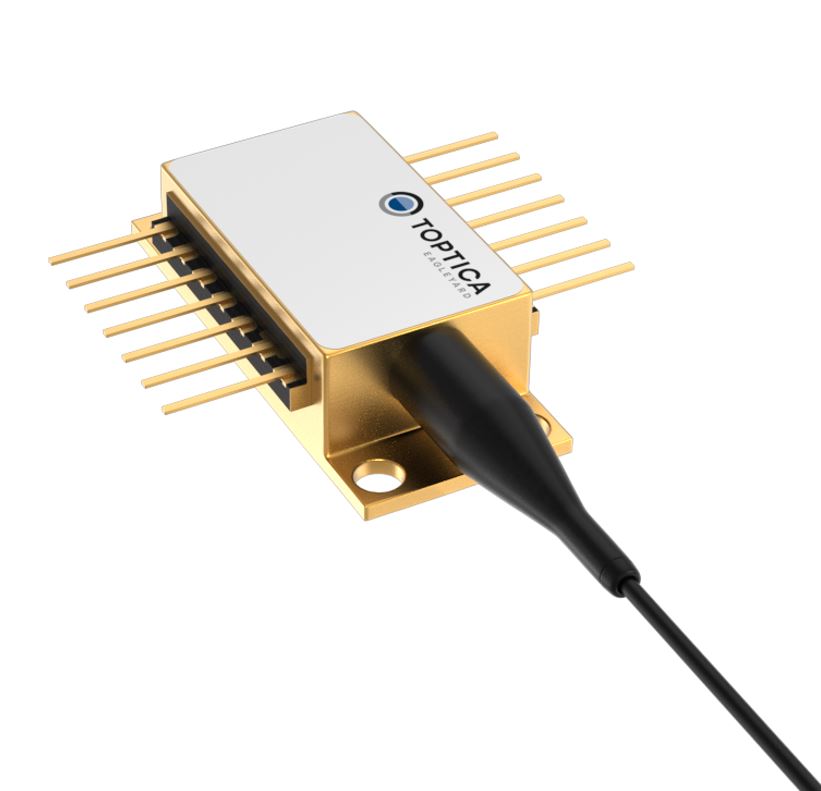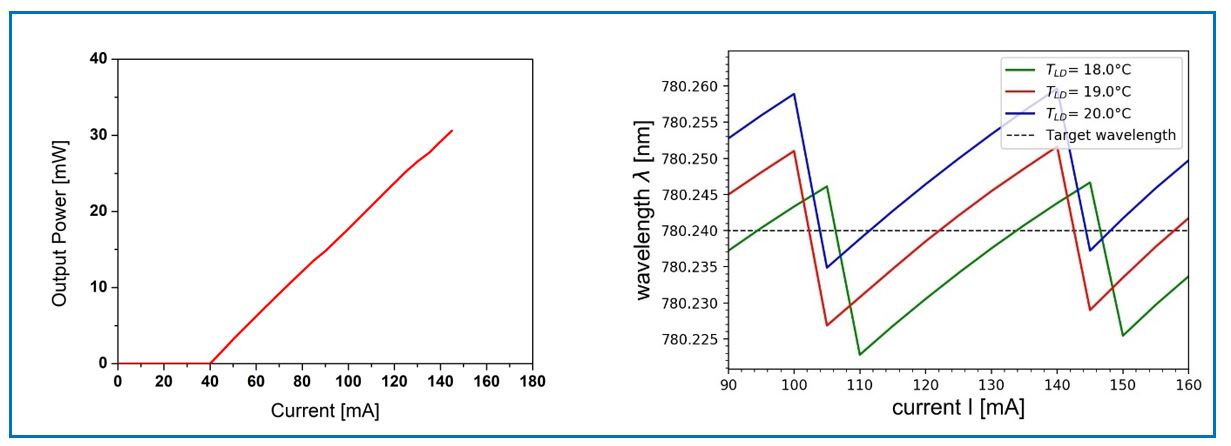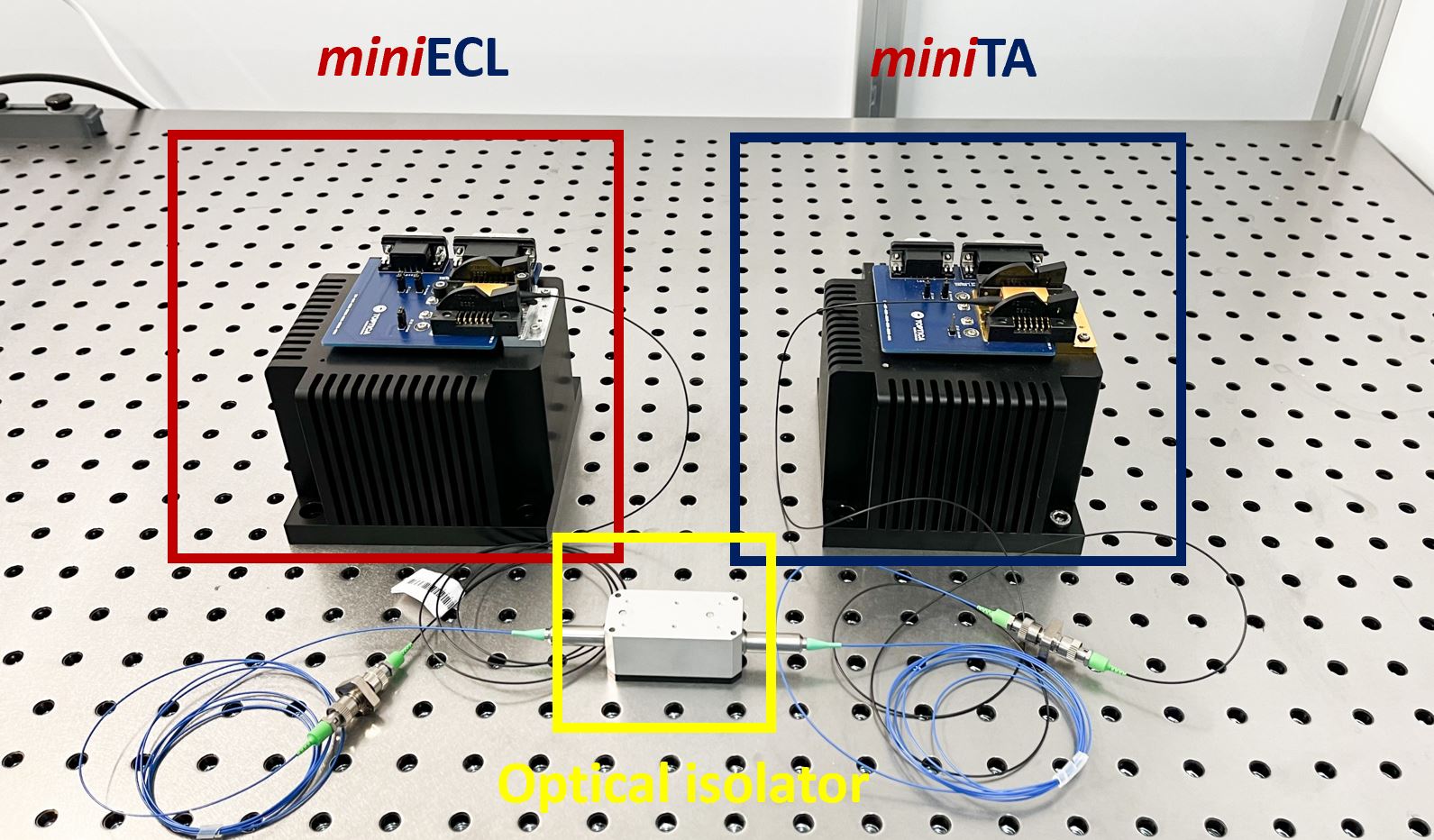High precision meets high stability & efficiency:
Launch of the 780 nm fiber-coupled miniECL

With the launch of the fiber-coupled miniECL 780 nm at the 2025’s SPIE Photonics West, TOPTICA EAGLEYARD once again shows how convenient and efficient using laser diodes has become. Engineers, design engineers and users outside of laboratories in general can now benefit from a highly integrated external cavity laser in butterfly platform with fiber pigtail to enable applications that require very narrow linewidths, high stability and reliability based on a scalable product platform.
“Our new fiber-coupled miniECL comprises all advantages of our popular miniECL family and offers further advantages that make this laser diode so special” says Michael Kneier, VP Sales & Marketing at TOPTICA EAGLEYARD.
Indeed, the launch of the first free-beam miniECLs in 2022 generated an echo in the industry as these were one of the first really stable laser diodes that reduced complexity based on the integration of the (external) cavity and have on top thermal management and beam collimation integrated into the hermetically sealed butterfly package. Now, in the next step, these truly superior laser diodes will become available with fiber pigtail and integrated optical isolator that enable a convenient plug & play. The launch of 780 nm marks the start of the fiber-coupled miniECLs family.

Image 1: fiber-coupled miniECL with internal view
With an exceptional output power of 25 mW the fiber-coupled miniECL is an ideal seed source, so that together with the miniTA 3 W are reached. In addition, the large mode-hop free tuning range ensures stable operation while the very narrow linewidth of typically 100 kHz is so precise that the miniECL is the ideal choice for transition lines such as Rubidium D2 line. With the requirement of high precision and reliability in many applications, the need for stability becomes more relevant. Due to the hermetically sealed butterfly package and the optimal 20 dB PER of the fiber, the new fiber-coupled miniECL is perfect for spectroscopy, quantum technology, metrology, life science, atomic clocks and all other applications that demand high precision and high stability paired with an easy and efficient set-up. Moreover, users benefit from the very low side mode suppression ratio of typically 45 dB.

Image 2: Output power and mode-hop free tuning range of 780 nm
The fiber-coupled miniECL can become a true game-changer not only based on its superior performance, but especially when looking at the reduced complexity due to the high integration level. Users don’t only save a lot of time but also benefit from a higher stability compared to the macroscopic set-up. Image 3 and 4 show the comparison and associated superiority very clearly. Image 3 shows the complex macroscopic set-up that can be reduced to the set-up shown in image 4 with the fiber-coupled miniECL and miniTA.

Image 3: Complex macroscopic set-up

Image 4: Convenient set-up with fiber-coupled miniECL and miniTA
The macroscopic set-up contains the ECDL (gain chip, collimating lens, grating), different alignment components, the optical isolator and the tapered amplifier with focus lens, heat sink and collimating lens. All of these components can be replaced by the miniECL and miniTA and an optical isolator resulting in a simple and quick set-up (see image 4).
Additionally to the already efficient set-up, TOPTICA EAGLEYARD offers an evaluation board (as shown in image 4) that makes getting started even easier and testing faster.
„Our new fiber-coupled miniECL is a prime example of how EAGLEYARD’s core competence works“ says CEO Claus Heitmann. „Transforming research-based know-how into market-ready products” is not only written in EAGLEYARD’s mission statement, but a living practice within the company, as demonstrated by this product launch. The miniECLs were originally developed in two research projects (Ultra Q Lase and ROYCE) and have since been optimized for scalability.“
The free-beam miniECL is currently available with 40 mW @ 671 nm (Li D1 & D2 line), 80 mW @ 770 nm (K D1 line), 80 mW @ 780 nm (Rb D2 line), 80 mW @ 852 nm (Cs D2 line), 80 mW @ 895 nm (Cs D1 line) and now also as fiber-coupled version with 25 mW @ 780 nm (Rb D2 line).
Read the press release, visit the product page or have a look at the product’s flyer.